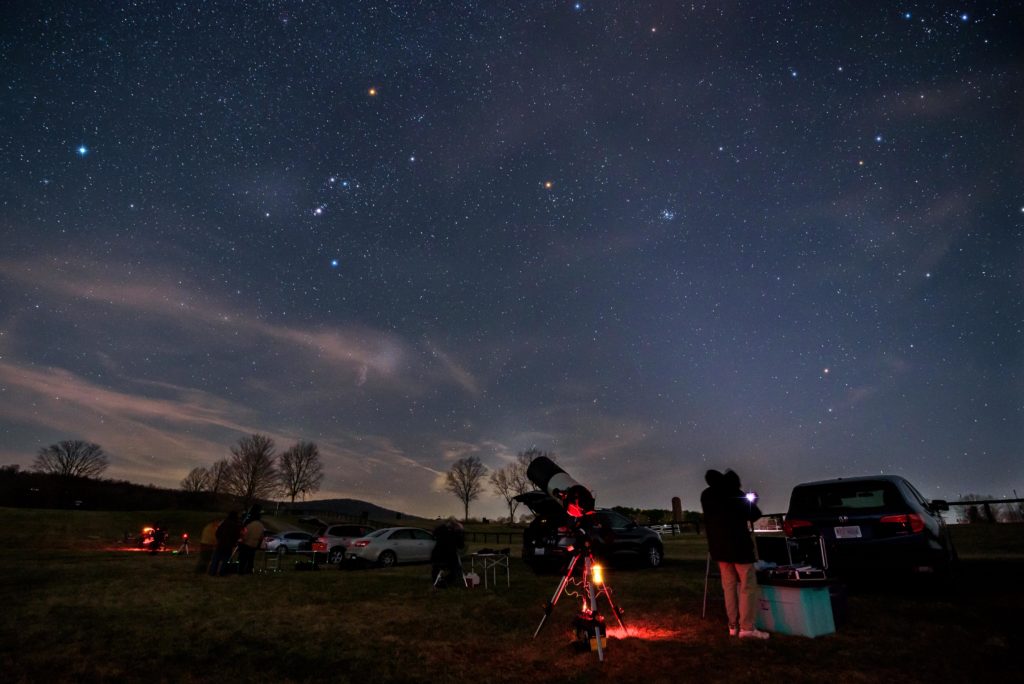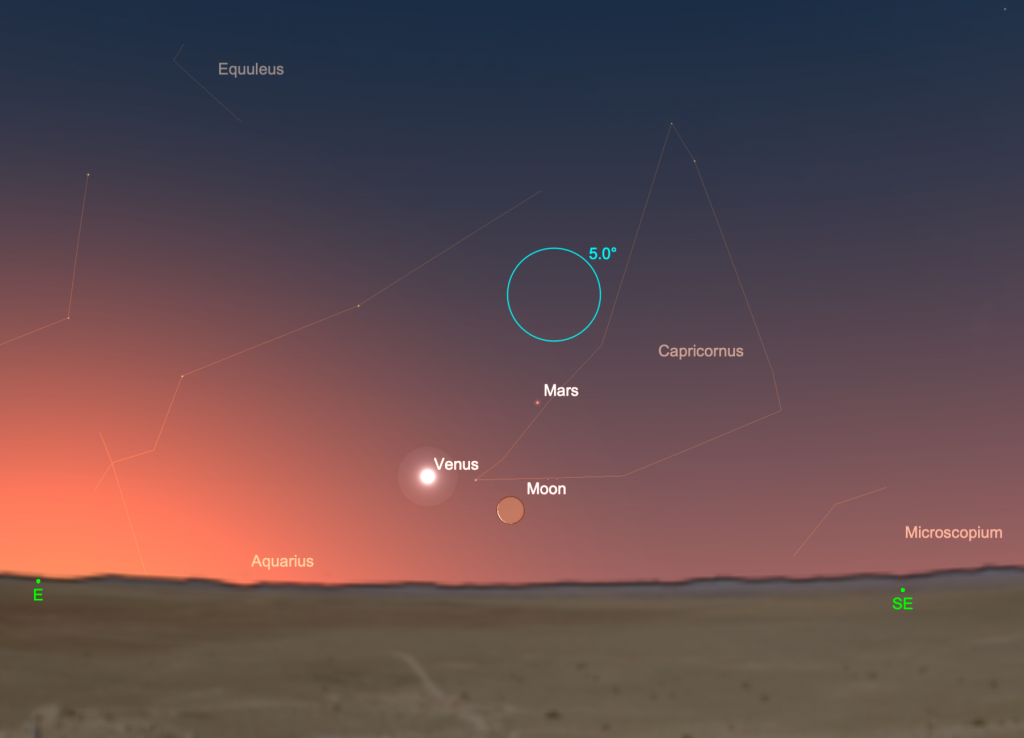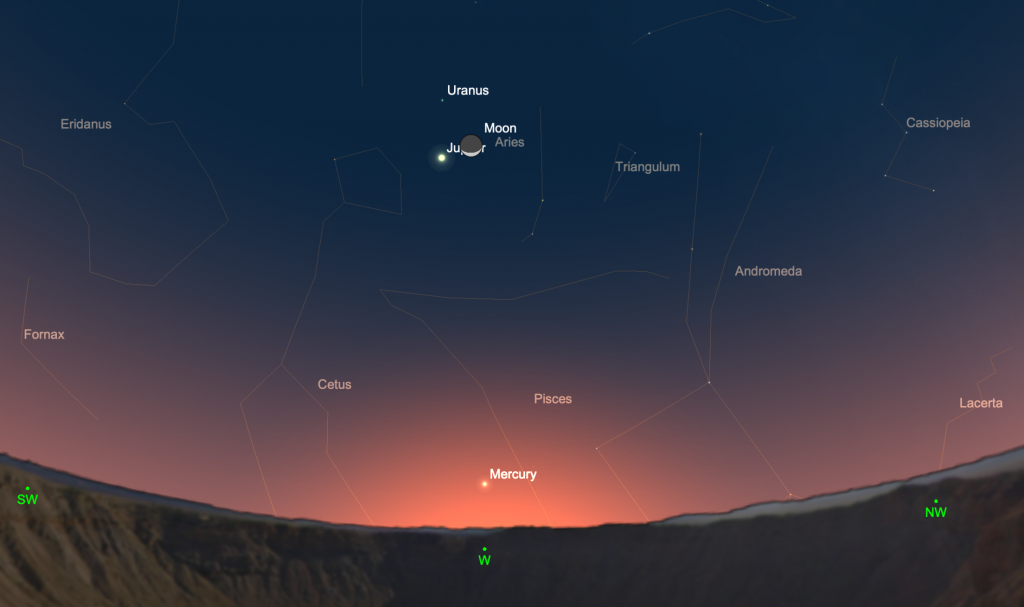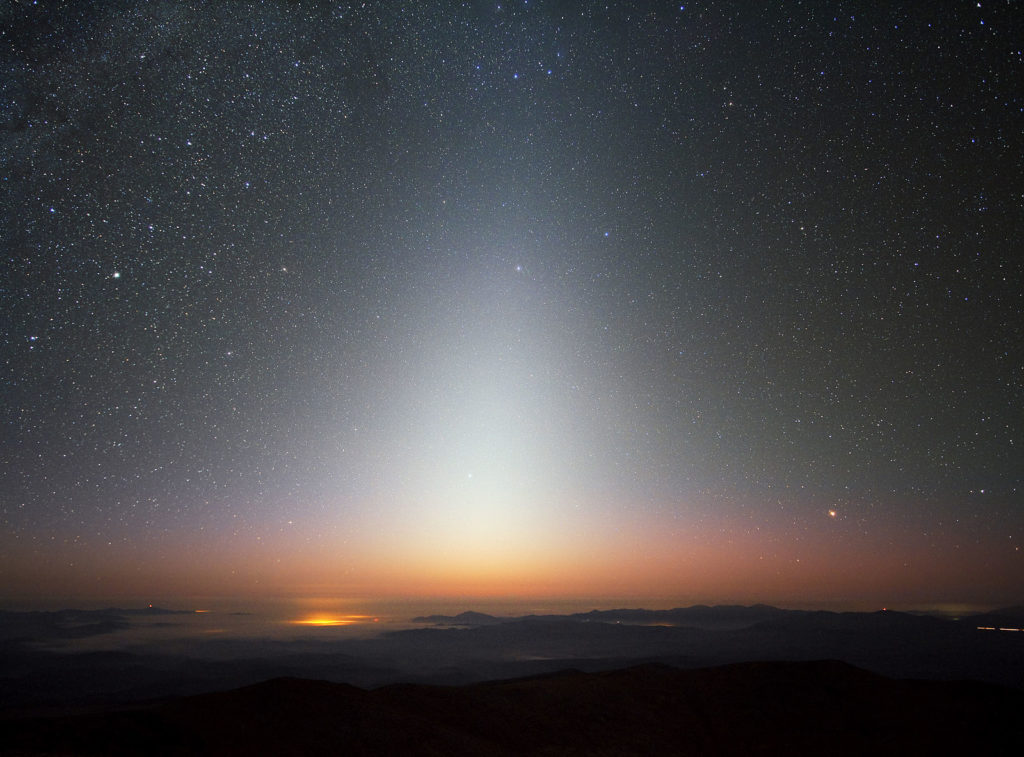
Jupiter remains in the western sky after sunset, while Mercury also makes an appearance low in the west at mid-month. Venus and Mars linger low in the eastern sky before sunrise. The prominent constellations Orion, Taurus, and Canis Major all move westward as March progresses, while the brighter parts of the Milky Way rise low in the southeastern sky before dawn. The seasons change as spring begins in the northern hemisphere and autumn begins in the south. And a penumbral lunar eclipse arrives for observers in the Americas and western Europe. Here’s what to see in the night sky this month…
3 March 2024. Last Quarter Moon, 15:23 UT
3 March. Look to the southeast before dawn to see the last-quarter Moon rise near the bright red-orange star Antares. Some observers in the southern U.S., Mexico, Central America, and northern South America will see the Moon occult Antares. Find timing and geographical information on this occultation at this link.

8 March. Venus lies about 5° north of a slender waning crescent Moon in the eastern sky before sunrise. The planet shines at magnitude -3.9 and, in a telescope, spans almost 11”. Take in the vista with a pair of binoculars to capture the full beauty of these two celestial objects. Also look for dimmer and smaller Mars about 6º west of the Moon this morning. The Red Planet shines at magnitude +1.2, a hundred times fainter than Venus, and appears very tiny in a telescope, just 4.3” across.
10 March. New Moon, 9:00UT
10 March. Daylight savings time begins for much of the U.S. and Canada. Move clocks ahead by one hour.
13 March. A waxing crescent Moon lies about 3° from Jupiter in the southwestern sky. While you’re out, have a look for Mercury low over the western horizon. The little planet makes its best appearance in the evening sky for northern observers for 2024.

14 March. This evening, the fat crescent Moon lies less than 2º southwest of the Pleiades star cluster.
17 March. First Quarter Moon, 04:11UT
17 March. Neptune is in conjunction with the Sun. In the coming weeks, this most distant planet in our solar system will slowly reappear in the morning sky.
20 March. The Sun crosses the celestial equator moving north at 03:06 UT. This marks the beginning of spring in the northern hemisphere and autumn in the southern hemisphere.
24 March. Mercury reaches greatest eastern elongation some 19º east of the Sun in the western evening sky.
25 March. Full Moon, 07:00 UT
25 March. A penumbral lunar eclipse is visible across all of the Americas and western Europe (where the Moon sets during the eclipse). During this event, the Moon passes into the penumbra (or outer region) of the Earth’s shadow. While not as dramatic as a total lunar eclipse, during this event you can see the full Moon’s disk partially darkened. Peak eclipse happens at about 07:12 UT, and most observers can see the shadow impinge on the Moon’s disk at about 06:25 UT. A lunar eclipse is followed two weeks later by a solar eclipse, and this time it’s a total solar eclipse visible across a narrow band across North America on April 8, 2024.

27 March. As the Moon moves out of the way in the evening sky, northern observers far from city lights can spot the zodiacal light in the western sky after sunset. This whitish wedge-shaped glow emerges at a steep angle to the western horizon this time of year. It’s caused by sunlight reflected by fine dust grains along the plane of the solar system. The zodiacal light is brightest closer to the Sun, so look for it about half an hour after the end of evening twilight as it extends up from the horizon towards the constellation Taurus.
30 March. A waning gibbous Moon once again moves close to the bright star Antares in the southeastern sky before dawn.